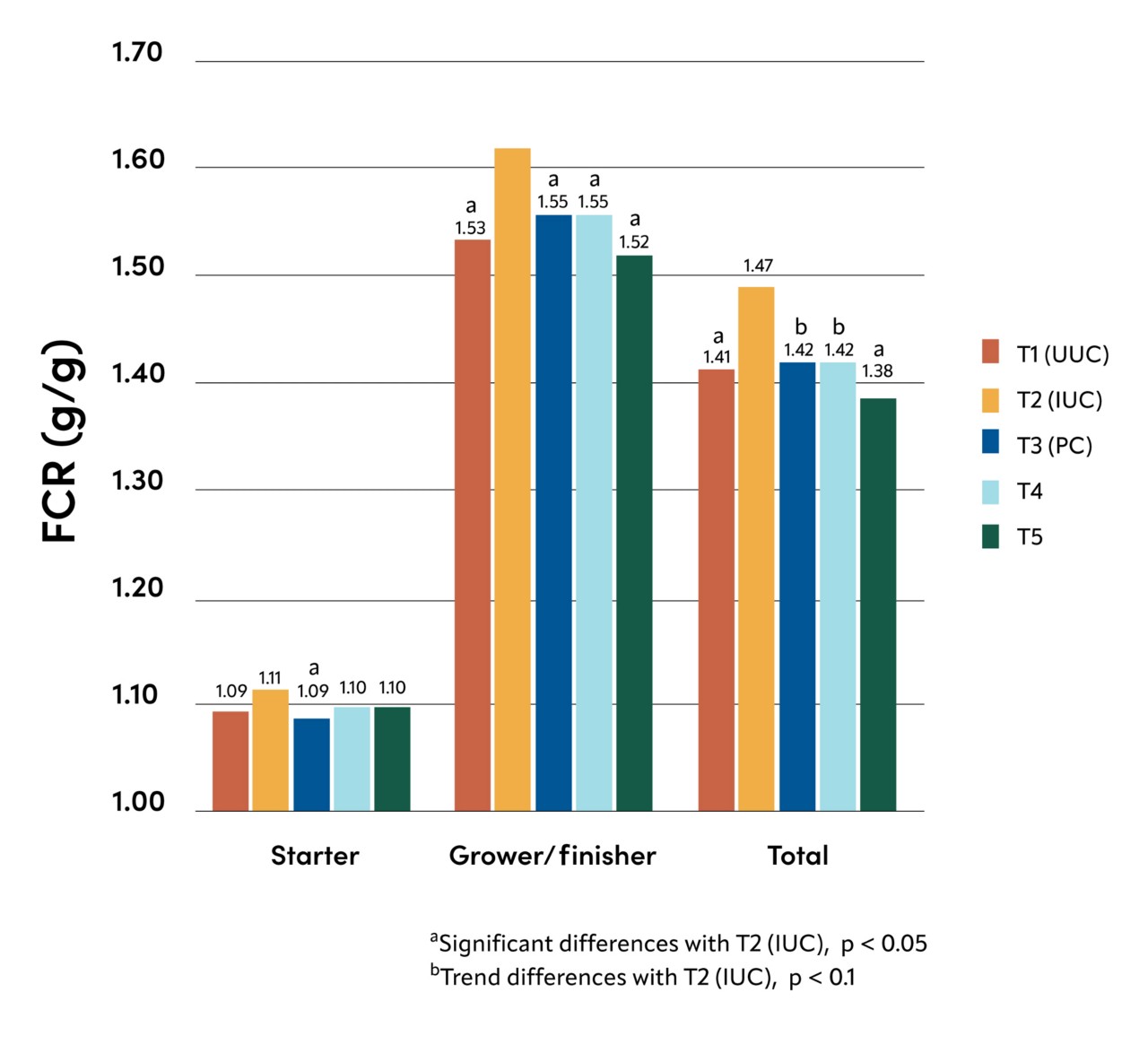Effectively managing colibacillosis in broilers is crucial for maintaining flock health and optimizing performance efficiency. The gut and cecum of chickens harbor a complex microbiota that closely interact with the host and ingested feed. The gut microbiota’s community and function are related to weight gain, feed nutrient utilization and overall bird health. Feed supplements such as monoglycerides of short-chain fatty acids (SCFA) and medium-chain fatty acids (MCFA) can support the gut microbiota and positively affect gut integrity and oxidative stress.
Advantages of monoglycerides
Monoglycerides are glycerol monoesters of organic acids where a glycerol molecule is covalently bound to an organic acid at position one. Compared to free organic acids, monoglycerides offer several benefits, including higher potency against bacteria and pH-independent activity that extends their impact further down the gastrointestinal tract. Additionally, monoglycerides are heat stable, dispersible in water, easy to handle and safe for equipment. Notably, monoglycerides are noncorrosive and have minimal odor, making them highly manageable.
Blends of SCFA and MCFA glycerides serve as a valuable tool in preserving E. coli and consequently combating colibacillosis. In vitro and in vivo broiler trials executed by Eastman refine our understanding of their application and benefits in broiler production, ensuring sustainable and healthy poultry farming practices.
Enhancing minimum inhibitory concentration (MIC)
Two E. coli APEC strains — one from an Irish and the other from a Belgian broiler farm — were isolated. The MIC of a blend contained straight organic acids (formic and propionic acid) with monopropionin, monocaprylin and monocaprin (Eastman Protaq™ Bond LF5 Na). It was compared to a benchmark product containing the same straight organic acids. Both products contained copper.
The experiment, conducted in Eastman’s microbiology lab under anaerobic conditions (constant pH of 6 and a temperature of 37°C), revealed Protaq Bond LF5 Na had a 50% lower MIC compared to the benchmark product. This demonstrates the synergistic antimicrobial effectiveness of the extra SCFA and MCFA monoglycerides against E. coli, even in different pathogenic strains.
Bacterial enteritis challenge
In Belgium, Poulpharm laboratory conducted a 35-day broiler trial to evaluate the efficacy of monoglycerides of SCFA and MCFA on performance parameters in a bacterial enteritis challenge model. Butyrins, as a part of the SCFA monoglycerides, are a very important part of the concept because of their extra effect on gut integrity and oxidative stress status.
One-day-old broiler chicks (Ross 308, sexed males) were randomly allocated to five dietary treatments based on their initial body weight (BW). The birds were exposed to bacterial (days 21–23) and coccidial challenges (day 22). The bacterial challenge consisted of E. coli, Enterococcus spp., Clostridium perfringens, Lactobacillus salivarius and crispatus.
Treatment groups included:
T1 — uninfected, untreated (UUC)
T2 — infected, untreated (IUC)
T3 — infected treated with Bacitracin as a positive control (PC)
T4 — infected group fed a combination of monoglycerides of SCFA and MCFA (C8-C10)
T5 — treatment 4 with additional monoglycerides of caprylic (C8), capric (C10) and lauric acid (C12)
Weekly records of body weight, feed intake, average daily gain (ADG) and feed conversion ratio (FCR) were collected.
There was a statistically significant effect of treatment on FCR from day 1 to day 35 (P = 0.006). All treatments groups showed significant differences to the IUC negative control. Supplementation with SCFA and MCFA monoglycerides (T4: FCR = 1.420) resulted in a similar FCR to the Bacitracin-treated group (T3: FCR = 1.419) and the unchallenged control (T1: FCR = 1.412).
The most favorable effects were observed when supplementing with the additional C8, C10 and C12 versus T4 (T5: FCR = 1.378; P = 0.06). Specifically, during the final week (days 28–35), treatments T4 and T5 exhibited numerically higher ADG compared to the IUC negative control (T2) (112.6 and 113.9 versus 107.8 g/day, respectively).
Figure 1: Effect of treatment on FCR


Figure 2: Effect of treatment on ADG


Conclusion
In both in vitro and in vivo studies, it has been demonstrated that a strategic combination of specific SCFA and MCFA monoglycerides can enhance the performance efficiency of broilers. Monoglycerides play a pivotal role in maintaining gut integrity, reducing oxidative stress and mitigating the prevalence of E. coli in broilers and broiler breeders.
Eastman has a range of products consisting of different monoglycerides for various challenges. Monoglycerides are available in both solid and liquid forms, suitable for use in feed mills (Eastman Entero-Nova™) and water applications (Protaq Bond™).
Sabien Vermaut
Associate AD&TS Manager, Animal Nutrition





